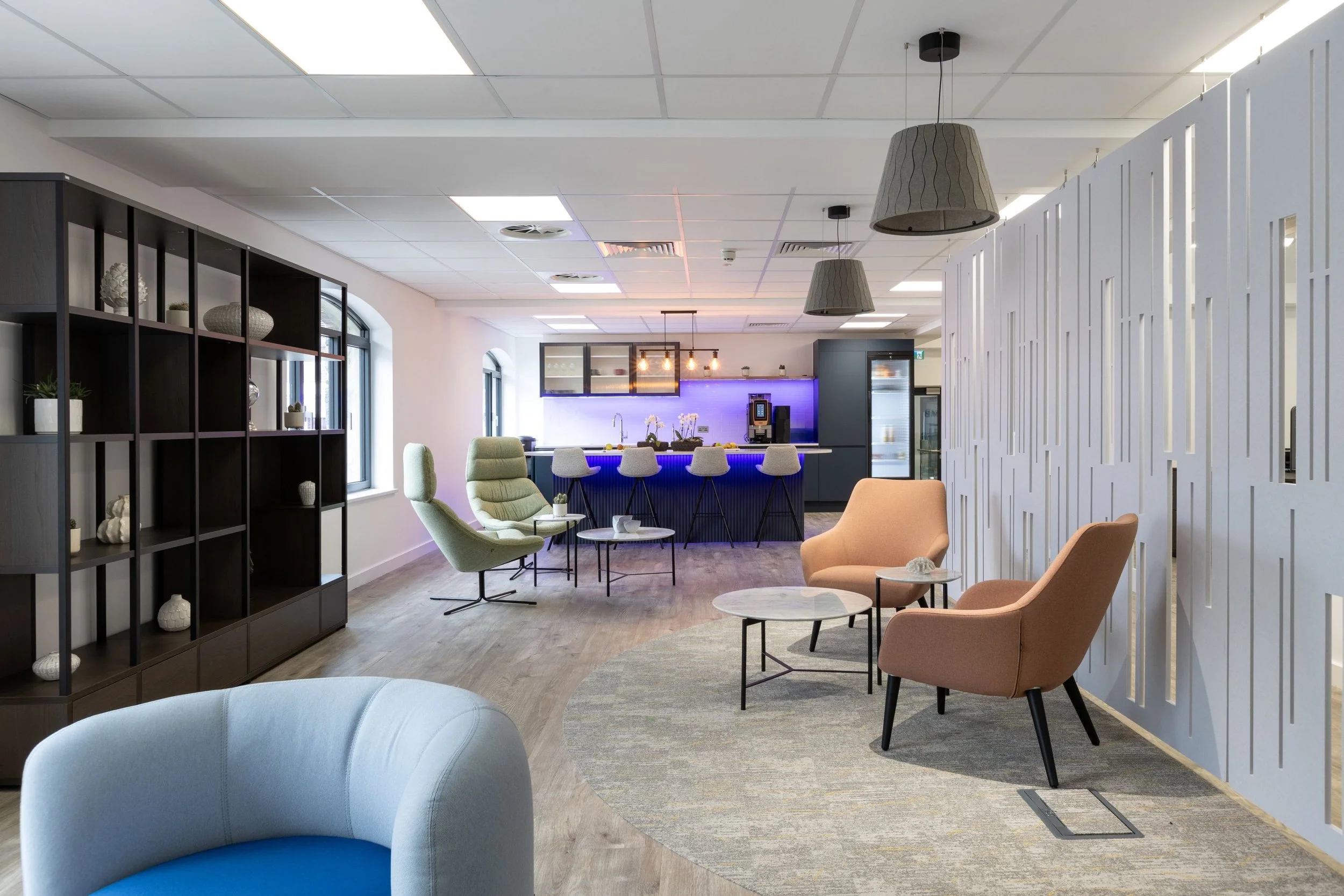Spontaneous Collaboration: Designing Spaces Where Ideas Connect and Culture Grows
Most teams don’t lack ideas — they lack the conditions that help ideas collide, evolve, and stick. The most valuable conversations rarely happen in a calendar slot. They happen on the way to coffee, while jotting ideas on the edge of a notepad, or when two people realise they’re tackling the same challenge from different angles.
This article unpacks the design mechanics behind those moments — how to make them more likely, how to support them without creating noise, and how to check whether a space genuinely encourages collaboration rather than just appearing to.
1) What actually drives “chance” encounters?
Spontaneous collaboration isn’t accidental — it happens when spaces quietly encourage people to cross paths and connect.
Proximity & Overlap: People interact when their daily routes overlap — grabbing a coffee, collecting a printout, or heading to a meeting. Layouts that encourage gentle movement through shared areas naturally boost these encounters.
Visibility & Clarity: When you can see activity and sense where conversation is welcome, you’re more likely to join in. Clear sightlines and open views create social confidence.
Inviting Touchpoints: Informal spots — a high table, a writable wall, a small sofa near circulation routes — signal that it’s okay to pause for a quick exchange.
Comfort & Safety: People speak up when they feel comfortable. Balanced lighting, warmth, and good acoustics all help make conversations feel effortless.
Ritual & Rhythm: Everyday moments — morning catch-ups, Friday coffees, shared lunches — become part of the office culture when the space supports them.
2) Common failure modes to avoid
Endless open plan: Big, open rooms without a clear purpose can be noisy and overwhelming. People withdraw to focus, and those valuable chance encounters fade.
Corridors that rush: Long, narrow routes push people through instead of giving them reasons to stop or say hello.
“Collaboration zones” that don’t work: If the shared area is always busy or loud, it won’t feel inviting for meaningful conversations.
Fixed furniture and rigid layouts: Great design is adaptable. Spaces that can’t change with the team quickly become barriers rather than enablers.
3) Design principles that increase productive collisions
a) Create natural movement
Position shared essentials — coffee, lockers, printers, bins — so people’s paths naturally cross. The more those everyday moments bring teams together, the more interaction happens without effort. When circulation routes are planned with intention, even small layout tweaks can have a big impact. A printer located near the kitchen, or a shared resources point beside a main route, becomes a natural meeting spot — a place where short, valuable exchanges happen without scheduling a meeting.
b) Encourage visibility
Open up views across the workspace but use gentle screening where needed. The goal is to feel connected without feeling watched. Visibility builds trust and transparency. When people can see what’s going on — a quick conversation, a whiteboard note, a burst of energy — they’re more likely to join in. The trick is balance: sightlines that invite curiosity, but still give individuals comfort and focus when they need it.
c) Introduce informal settings
Add small, flexible areas along main routes: a high table for a quick chat, a writable wall for notes, or a couple of chairs near natural light. These create easy moments to pause and connect. Not every conversation deserves a meeting room. Informal settings allow teams to share quick updates, solve problems on the spot, or simply connect during the day. They’re also an important signal: collaboration is welcome here, not reserved for boardrooms.
d) Balance energy and quiet
Every lively area needs a nearby calm spot — a booth, soft seating corner, or focus zone — so conversations can move naturally between collaboration and concentration. Noise and energy are positive signs of life, but they need boundaries. A balanced workspace allows people to shift gears effortlessly — brainstorm one minute, focus the next — without having to relocate or compromise productivity.
e) Allow flexibility
Lightweight, movable elements — flip-top tables, mobile whiteboards, flexible lighting — help teams shape their space to suit the day. Clearly defined areas (“drop-in”, “quiet”, “team huddle”) make social expectations obvious. Workplaces evolve, and so should their layouts. Spaces that can be rearranged quickly respond better to change — whether that’s a growing team, a spontaneous idea session, or a company event. Flexibility empowers people to take ownership of their environment and use it as a creative tool.
4) Designing for serendipity in practice
You can’t schedule spontaneous moments — but you can create the conditions for them. That means:
Placing shared amenities where people already move naturally.
Designing comfortable, open spaces that encourage short, informal interactions.
Making transitions between zones just open enough to prompt connection without disturbing focus.
When these elements come together, collaboration starts to feel effortless. People cross paths more often, conversations flow more freely, and ideas have space to form. That’s ultimately what good workplace design is about — creating environments that nurture people, ideas, and culture, not just activity.
5) Example: Turning social space into the heart of the office
In many of our projects, we’ve transformed kitchens and coffee points from back-of-house utilities into the social heart of the workplace. By moving them centrally — where everyone passes through — they become destinations for conversation, not just refreshment.
These hubs help shape the rhythm of the working day. They’re bright, comfortable and distinct from the main workspace — often with softer finishes, warmer lighting, and relaxed seating. They’re places people naturally want to spend time, where casual chats spark collaboration and culture builds organically.
When a workplace has a visible, welcoming social hub, it sends a clear message about values. It tells people that connection matters — that the organisation recognises the importance of balance, well-being, and shared experience. The simple act of bringing people together over a coffee or lunch can strengthen trust between departments, inspire fresh thinking, and reinforce the sense that work is more than tasks and deadlines — it’s a shared journey.
Talk to POS
We help clients turn offices into engines of learning and momentum — without adding noise. If you’d like a rapid, low-commitment assessment of your current layout, ourQuickPlanapproach maps daily journeys, identifies high-impact tweaks, and models costed options in days, not months. Get in touch to explore how we can help you create a workspace that truly connects people and ideas.








